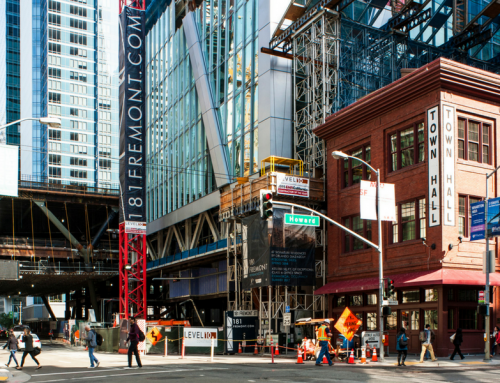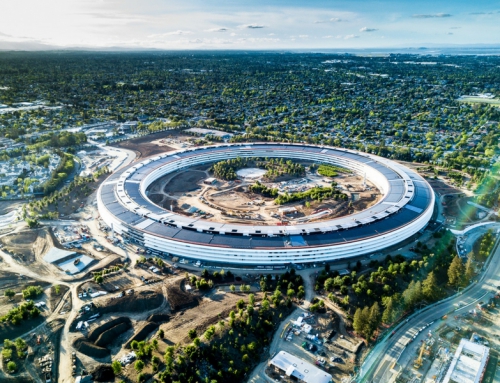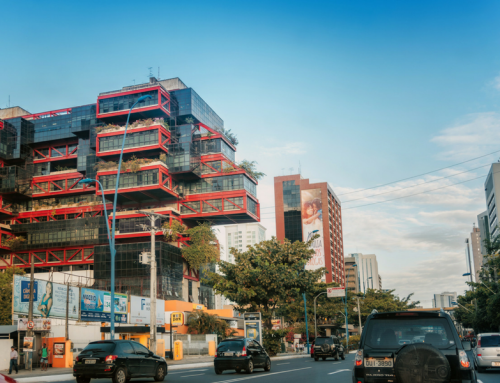Acceleration in technology brings building marvels to San Francisco.
Here at LISA, we’ve been steadily absorbing Thomas Friedman’s recent book, Thank You for Being Late: An Optimist’s Guide to Thriving in the Age of Accelerations, and its implications for the AEC industry.
“Today, the accelerating speed of scientific and technological innovations can outpace the capacity of the average human being and our societal structures to adapt and absorb them,” Eric Teller, an executive at Google, tells Friedman. Teller’s research and development lab are responsible for Google’s self-driving car.
“Many of us cannot keep pace anymore,” Teller goes on, “and that is causing a lot of cultural angst. It’s also preventing us from fully benefiting from all of the new technology that is coming along every day.”
Friedman asks readers to consider, for example, how computer technology has evolved and how we’ve had to adapt to each of these technological firsts: there was the printing press, the telegraph, and the manual typewriter; the Telex, the mainframe computer, and the first word processors; the PC, the Internet, and the laptop; the mobile phone, mobile apps, and big data; and now virtual reality, human-genome sequencing, artificial intelligence, and the self-driving car.
In the last few decades, the pace of acceleration is on an even steeper upward trajectory. (Friedman’s thesis is that technology is one of three drivers of this acceleration; the other two are climate change and globalization.) Where we’ve come, and where we might be going, it’s all a bit dizzying.
To thrive in this new age, Friedman writes, it is imperative that we adjust and adapt: “Anyone who falls back on tried-and-true formulae or dogmatisms in a world changing this fast is asking for trouble.”
Enhancing humanity’s adaptability, says Google’s Teller, “is 90 percent about optimizing for learning—applying features that drive technological innovation to our culture and social structures.”
The construction industry is at the forefront of industries actively “optimizing for learning.” Advances in and the application of technology is not happening only at Google, Intel, and Tesla—it’s going on in every metropolitan construction ecosystem in the country.
Today, the AEC industry is fully capable of benefiting from new technology. The nearly finished 181 Fremont skyscraper, for example, would have been impossible without cutting-edge BIM technology.
Or take the two towers located on San Francisco’s Rincon Hill: the 60-story, 641-foot One Rincon Hill South Tower, completed in 2008, and the 50-story, 541-foot One Rincon Hill North Tower, finished in 2014. Together they form a stunning, 709-unit residential complex connected by townhomes at their base.
The two towers were built on Rincon Hill’s apex and only eight miles from the San Andreas Fault. To allow for placement in such a dangerous seismic area writes The Skyscraper Center, the project “employed a first-of-its-kind structural system using a nontraditional Performance Seismic Design approach (PSD), the first ever to be approved in California.”
The South Tower’s seismic safety began with a 13-foot-thick, pile-raft foundation embedded deep into serpentine rock. Its ability to absorb shock was ensured using outriggers—tall reinforced concrete columns built around the core of the building. The columns connect to the core with “buckling restrained braces encased in sleeves of steel and reinforced concrete,” writes SFGate, and are “designed to provide extra strength in case of a strong shock, as in an earthquake.”
When the South Tower was built, due to its isolated location—a lone beacon south of San Francisco’s main business district—engineers realized that dangerous winds could cause the building to sway. In response, they built a 50,000-gallon water tank, called a tuned sloshing damper, that, in the event of wind acceleration, sloshes water to counteract the wind’s force. Boston, New York, South Korea, and Hong Kong use the same technology. It was the first on the West Coast.
The Rincon Hill project had so many innovative aspects that building inspectors were caught off-guard, noted SFGate: “The combination of the core construction, the bracing system, and the water tanks make One Rincon so unique that San Francisco building inspectors were cautious at first about approving the plans.”
They did. And these technological marvels got built.
In an age of increasing acceleration across the board, the AEC industry continues to adapt to new technologies. Bringing more sharp minds into the industry will ensure its adaptability and resilience continues.






